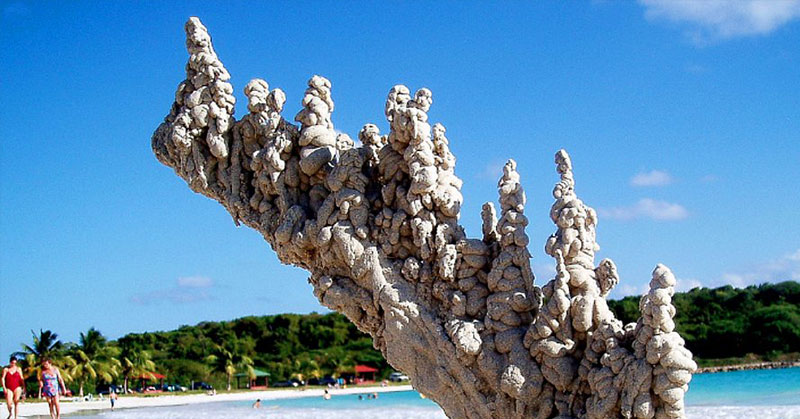Witnessing lightning striking the ground may not be a desirable scenario for many, but from a distance, nature offers some magical phenomena to behold.
When lightning strikes sand, soil, rock, or silica-rich surfaces, it forms fulgurites. These tube-shaped glassy deposits are created when temperatures as high as 1,800 degrees Celsius dissolve the atomic structure of sand or rock, transforming them into something truly fascinating.
The intense heat from lightning melts the silica in a split second, fusing it with other minerals and elements in the sand, leading to the formation of glassy deposits on the surface. Similar heat sources can also create fulgurites.
Fulgurite Composition
Fulgurites, deriving from the Latin word “fulgur,” meaning “thunderbolt,” are covered in rough exterior particles while having smooth, hollow interiors filled with vapor bubbles from the cooling process.
There are two main types of fulgurites: sand fulgurites, commonly found on beaches and deserts, and rock fulgurites, typically seen in mountainous regions. Silica, especially in the form of silicon oxide, plays a crucial role in their formation.
Understanding Lightning through Fulgurites
Fulgurites can extend deep below the surface and often exhibit intricate formations, shedding light on the immense power of lightning strikes. By studying fulgurites, scientists aim to gain insights into the mechanics of lightning.
Analyzing the vapor bubbles trapped within fulgurites can provide valuable information on the temperatures reached during formation. This, in turn, can enhance our understanding of lightning processes and the impacts on surrounding materials.
“[When lightning strikes], only a fraction of the energy is actually transmitted to the rock. Those impact events are relatively difficult to study, but lightning hitting a target is relatively easy to find,” Chen explained.
Further research on fulgurites could uncover groundbreaking details about the nature of lightning and its effects on different materials, offering a deeper understanding of this powerful natural phenomenon.
Sources
- Editor. Fulgurite: When lightning strikes sand, magic is formed. Geology In. https://www.geologyin.com/2014/06/amazing-fulgurites.html.
- Editors. Fulgurite. Britannica. https://www.britannica.com/science/fulgurite.
- Ghose, Tia. Zap! ‘Petrified Lightning’ Could Reveal the Shocking Heat of the Strikes. Live Science. https://www.livescience.com/57237-petrified-lightning-reveals-energy-of-strikes.html.






